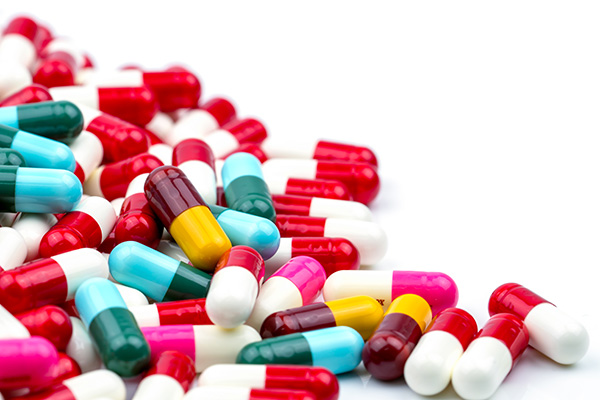We need effective antibiotics more than ever, but a broken market has slowed down discovery.
Despite drug-resistant infections causing over a million deaths per year, the hunt for new antibiotics has not kept pace with the superbugs that have learnt to dodge their effects.
Associate Professor Mark Blaskovich, Director of IMB’s Centre for Superbug Solutions said we’re no longer generating new and improved antibiotics fast enough to stay ahead of the bacteria gaining resistance.
BY THE NUMBERS
Cost of developing a new antibiotic
A$1bn
The antibiotics market is broken
A big reason is that the antibiotics market is broken, Dr Blaskovich said.
It can take anywhere between 10–15 years and over A$1 billion to develop a new antibiotic, making it a costly and time-consuming process.
To put things in perspective, a two-week course of a new antibiotic costs around A$15,000, while the latest CAR T-cell cancer therapy can rake in over A$500,000 for a single treatment.
“You just don’t get any economic return on all the money you’re investing to develop a new antibiotic,” Dr Blaskovich said.
Another problem is that bacteria quickly become resistant to new antibiotics, resulting in a short shelf life compared to other drugs.
To avoid giving bacteria a leg up, new antibiotics are only prescribed when routinely prescribed antibiotics are ineffective.
This means that they are can only be purchased in limited amounts, making it difficult for pharmaceutical companies to make a profit.

Little incentive for pharmaceutical companies
Most bacterial infections are cleared up with antibiotics that are already available, providing little incentive for companies to develop new ones that will only be used rarely.
“That’s a disincentive for companies because it’s counterintuitive: what they want to do is sell as much as possible,” Dr Blaskovich said.
On top of this, antibiotics are typically used for a week or two at a time, while medications for chronic conditions like high cholesterol or cancer are taken over months or years.
With skyrocketing costs, meagre profits and drugs quickly becoming redundant as bacteria build resistance, most large pharmaceutical companies have pulled the pin on antibiotic development.
The bulk of the task has fallen on small biopharmaceutical companies, whose work accounts for over 95 per cent of antibiotic research and development.
While some of these companies have made progress in the hunt for new antibiotics, they don’t generate enough revenue to cover the costs of bringing a new drug out of the lab and onto the market.
“This means that, fundamentally, the whole system for developing new antibiotics is not economically viable,” Dr Blaskovich said.
How to fix a broken market
Reward successful developers
A big problem with the current economic model for antibiotics is that companies need to sell large volumes to earn a profit,which is not feasible given that antibiotics are only bought in small amounts.
One possible solution proposed by UK economist Jim O’Neill is to implement a ‘market entry rewards’ system where successful developers are rewarded with a lump sum payment when their product reaches market.
Create a subscription model
Instead of paying for antibiotics on a per dose basis, government organisations could pay pharmaceutical companies a set annual fee to access a variety of antibiotics,an approach that is currently being trialled in the United Kingdom and Sweden, and proposed in the USA through the PASTEUR Act. The Netflix-style model could give drug firms more incentive to develop new antibiotics, as payments are based on their overall value to public health rather than the amount of antibiotics used.
Build a sustainable pipeline
The AMR Action Fund was developed by the World Health Organization, European Investment Bank and the Wellcome Trust to address the funding and technical challenges of bringing promising new antibiotics to market. The fund expects to invest more than US$1 billion to support the clinical development of antibiotics and aims to bring up to four new antibiotics to patients by 2030.
